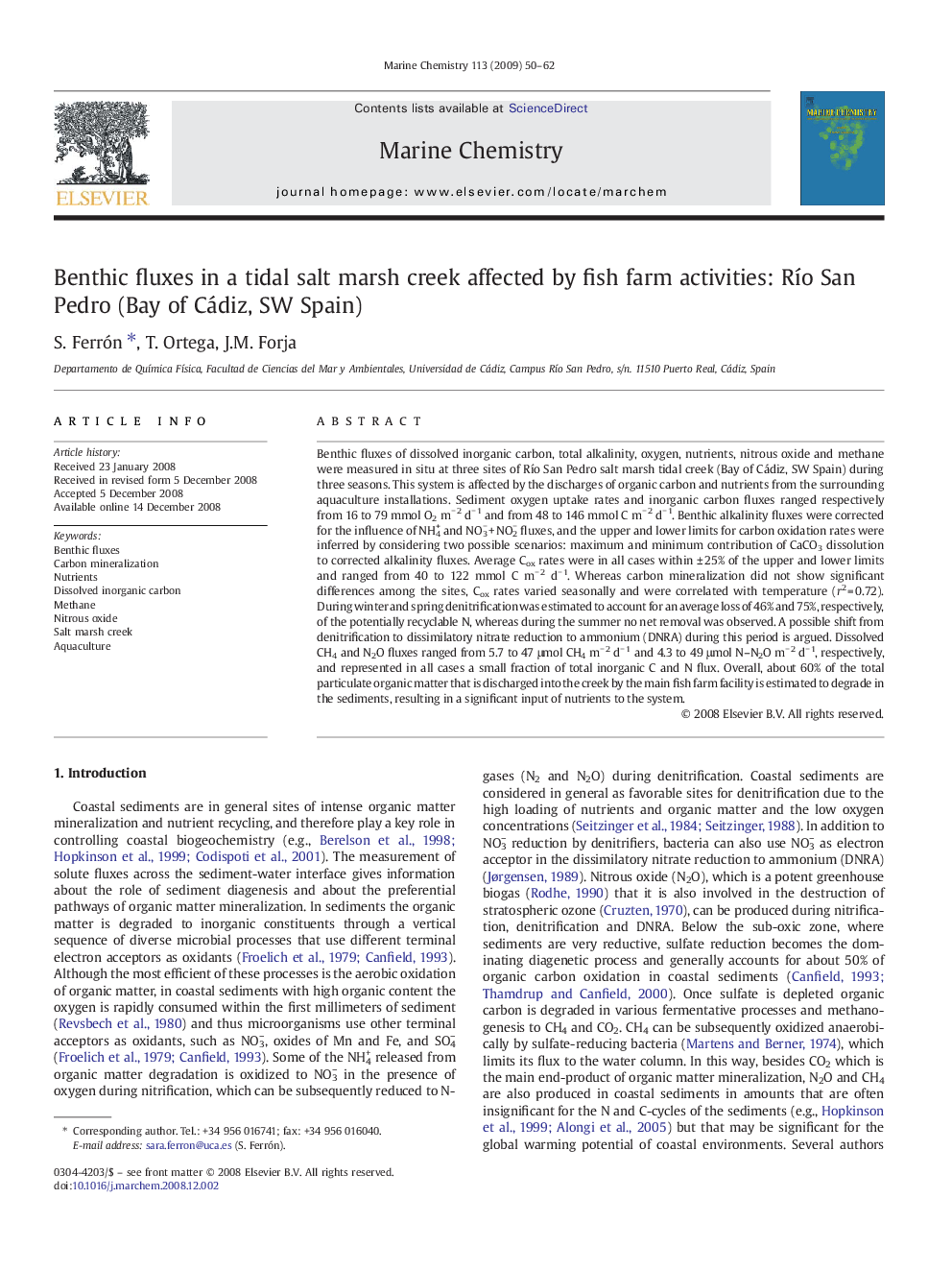| Article ID | Journal | Published Year | Pages | File Type |
|---|---|---|---|---|
| 1261844 | Marine Chemistry | 2009 | 13 Pages |
Benthic fluxes of dissolved inorganic carbon, total alkalinity, oxygen, nutrients, nitrous oxide and methane were measured in situ at three sites of Río San Pedro salt marsh tidal creek (Bay of Cádiz, SW Spain) during three seasons. This system is affected by the discharges of organic carbon and nutrients from the surrounding aquaculture installations. Sediment oxygen uptake rates and inorganic carbon fluxes ranged respectively from 16 to 79 mmol O2 m− 2 d− 1 and from 48 to 146 mmol C m− 2 d− 1. Benthic alkalinity fluxes were corrected for the influence of NH4+ and NO3− + NO2− fluxes, and the upper and lower limits for carbon oxidation rates were inferred by considering two possible scenarios: maximum and minimum contribution of CaCO3 dissolution to corrected alkalinity fluxes. Average Cox rates were in all cases within ± 25% of the upper and lower limits and ranged from 40 to 122 mmol C m− 2 d− 1. Whereas carbon mineralization did not show significant differences among the sites, Cox rates varied seasonally and were correlated with temperature (r2 = 0.72). During winter and spring denitrification was estimated to account for an average loss of 46% and 75%, respectively, of the potentially recyclable N, whereas during the summer no net removal was observed. A possible shift from denitrification to dissimilatory nitrate reduction to ammonium (DNRA) during this period is argued. Dissolved CH4 and N2O fluxes ranged from 5.7 to 47 μmol CH4 m− 2 d− 1 and 4.3 to 49 μmol N–N2O m− 2 d− 1, respectively, and represented in all cases a small fraction of total inorganic C and N flux. Overall, about 60% of the total particulate organic matter that is discharged into the creek by the main fish farm facility is estimated to degrade in the sediments, resulting in a significant input of nutrients to the system.
